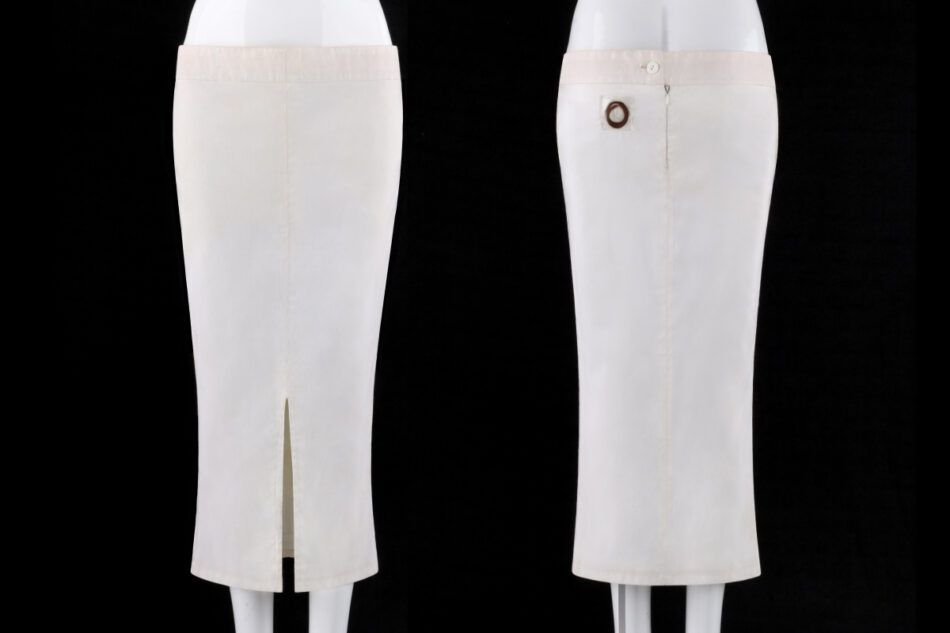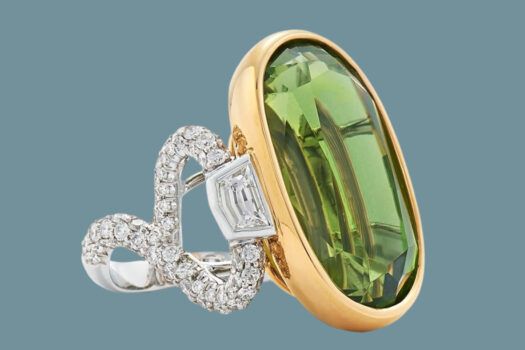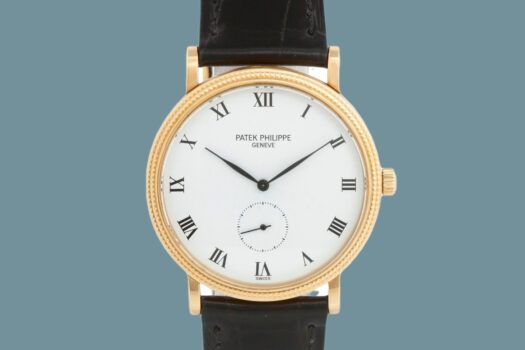The low-rise waistline is slinking down fashion runways once again. It was a Y2K favorite, but the silhouette owes its staying power to a 1990s icon that went farther than any others dared: the bumster, which made its cheeky debut in Alexander McQueen’s Fall/Winter 1993 collection.
Slouched waistlines had a moment in the ’60s and ’70s, but the bumster took the trend to new extremes. In McQueen’s 1995 collection, the Birds, the bumster waistline appeared in leather trousers, checked-wool suit pants and this exceptional mid-length skirt. Beneath its low-slung waist, the piece features a tantalizing detail that epitomizes McQueen’s signature dark romance: a hair label. Tucked into a tiny Perspex square on the outside of the rear of the garment is, yes, a coil of real human hair. The skirt, which is being offered on 1stDibs by Fifth-Main, belongs to an elite group of McQueen creations aptly known as “hair label” pieces.
Runway onlookers were unsettled by this detail, likely presuming a sinister motive from fashion’s provocative upstart. The suspicion was not completely unwarranted. McQueen’s graduate collection at Central Saint Martins was titled Jack the Ripper Stalks His Victims, and he later boasted that, during his Savile Row apprentice days, he sewed a profane message into the lining of Prince Charles’s suit jacket.

Early in his career, McQueen took inspiration from the Victorian tradition, equal parts romantic and macabre, of hair-work jewelry. The custom of memorializing the dead with a lock of their hair, artfully woven and preserved in rings, lockets and other precious mementos, reached a high point in the 19th century. Courting lovers would also exchange these tokens, although some sources note that the locks used for this purpose were often bought from the era’s prostitutes. McQueen shared the Victorians’ morbid obsession with mortality, and in his earliest collections, the hair employed was said to be his own.
Few examples of McQueen’s hair-label pieces survive (though Fifth-Main is fortunate enough to have several in its collection), and they are not for the amateur collector. This skirt is currently on display in New York in the companion exhibition to the off-Broadway play “House of McQueen,” and hair-label garments have been included in major retrospectives of the designer’s work, including the Met’s 2011 “Savage Beauty.” Some hair labels, like those in the Fall/Winter 1996 Dante collection, are concealed within garment linings, but the Birds’ bumster skirt bares all.

McQueen’s training as a tailor is evident in the skirt’s hip-hugging curves and surgically precise front slit, but his identity and upbringing were much grittier than the Savile Row scene. In his explorations as a designer, he sought to queer the modus operandi of the establishment that trained him. While the bumster design was incendiary, it wasn’t about the “bum” at all. McQueen wanted to display the base of the spine, which he regarded as “the most erotic part of anyone’s body, man or woman.” And so, in a career full of highs, one of McQueen’s shining moments was achieved by going low.






